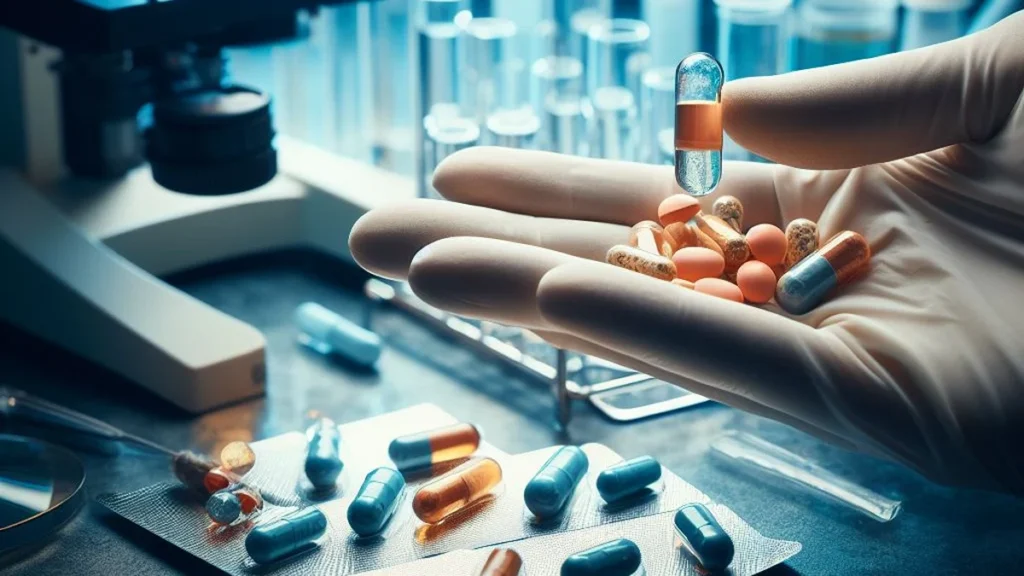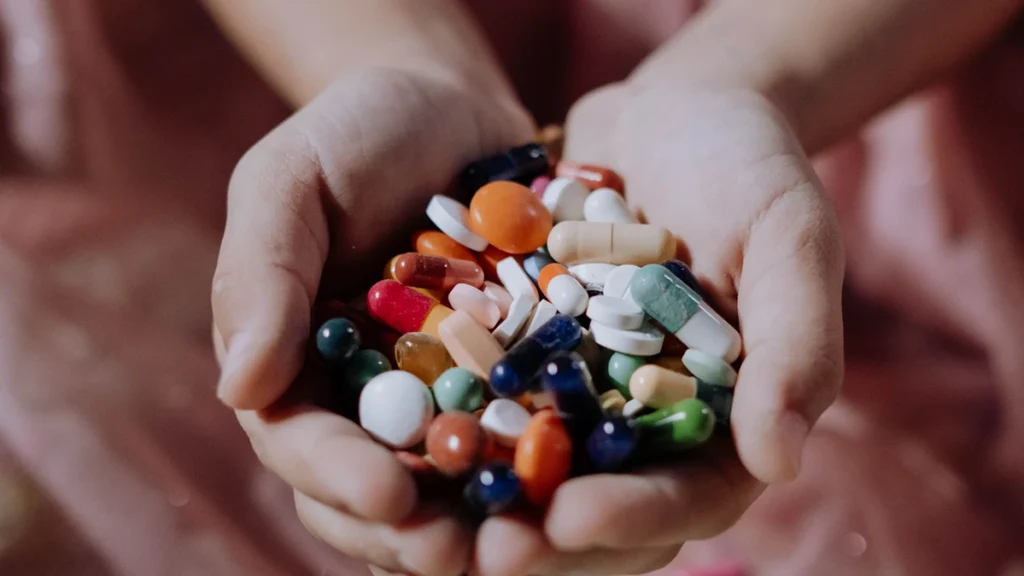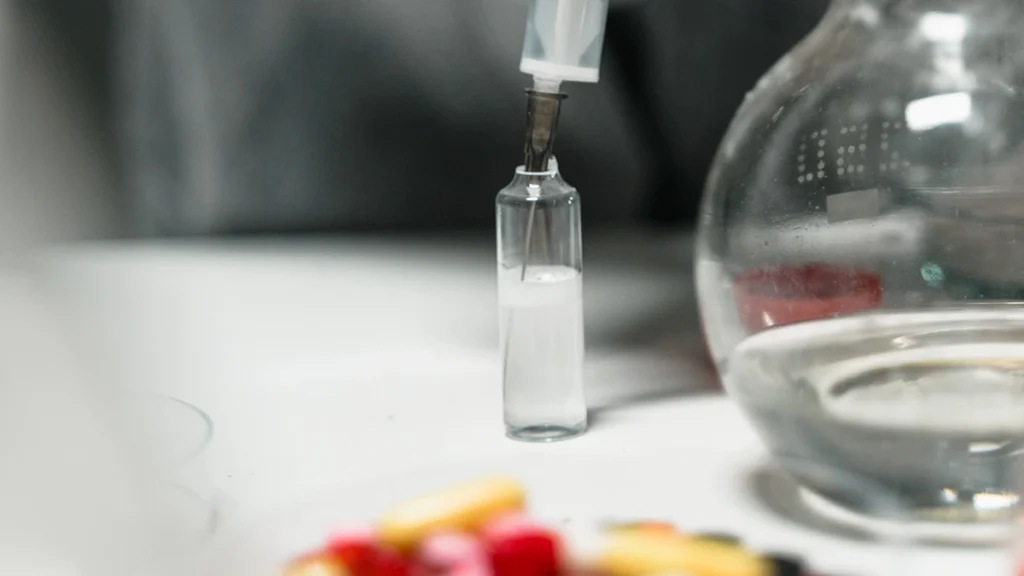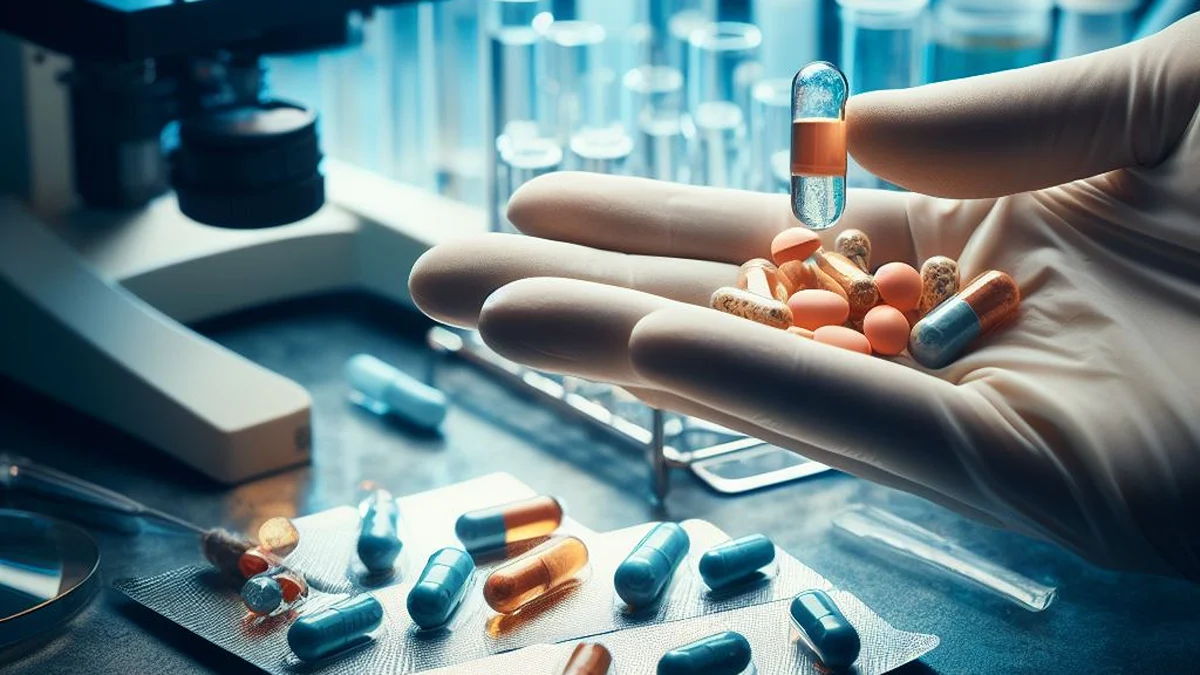Why New Antibiotic Drug Discovery is Important?
Since discovery of first antibiotic by Alexander Fleming, antibiotics are continuously used to treat deadly bacterial infections and they are still in excessive use. But with the passage of time no multidrug resistant bacteria or “super bugs” infections and outbreaks are rapidly rising which is alarming because because of ineffectiveness of available antimicrobials or treatment options.
Therefore, rapidly rising antibiotic resistance is hardly pressing on the need of new antibiotic discovery otherwise we will be short of treatment options to treat deadly infections. Moreover, there is also need of alternate options for antibiotic treatments like vaccines, immunity boosters or pre-biotics to strengthen diagnostic approach and avoid antibiotic usage to its minimal level.

What is the Current Situation of Antibiotic Discovery?
As we have already discussed available antibiotics , their mechanism of actions and antibiotic discovery timeline in detail now we will discuss current drug discovery pipeline for antibiotic development in the later stages of clinical development (Phase II and III clinical trials) which may enter in market in coming years to treat important resistance in bacteria are discussed in this article. There are only 18 new drugs under trial right now which is not sufficient to cater future need of disease treatment.
Currently, Drug discovery pipeline currently includes only eighteen antibiotic drugs under clinical trial of development. It is important to note that anti Gram-positive antibiotics under trial are higher in number (10) out of which four are in phase three however, anti-Gram-negatives antibiotics are only five while only two are in phase III.
According to estimate, three to four anti-Gram-positive, one broad-spectrum, two anti-Gram-negatives but no new antibiotic drug class will reach the market over the next few years which are a serious concern. It is estimated that 50% of compounds complete phase II and 75% of those who complete phase III enter market. Overall, only 25% of compounds reach to market after final approval.

Antibiotics for Gram-Positives in Drug Discovery Pipeline
Uptil now, only six compounds in Phase II and four in Phase III which are under trial against Gram positive bacteria.
Anti-Gram-Positives antibiotics in clinical trial in drug discovery pipeline (Phase II)
| Anti-Gram-Positives antibiotics in clinical trial in drug discovery pipeline (Phase II) | |||||||
| Serial no. | Class | Product | Spectrum | IV/oral) | Indications | Phase | Company (licensor/ originator) |
| 1 | Glycopeptide cephalosporin hybrid | TD-1792 | Gram-positive | IV | skin and soft tissue infections (SSTI), Hospital associated pathogens i.e. MRSA (HAP) | Phase IIa | Theravance |
| 2 | Ketolide | EDP-420 (modithromycin) | Gram-positive and respiratory tract infection pathogens | Oral | Community acquired RTIs | Phase II | Enanta (Shionogi) |
| 3 | Fluoroketolide | Solithromycin (BC-3781, a Novel Pleuromutilin Compound) | Gram-positive and respiratory tract infection pathogens | IV/oral | Community acquired RTIs Biothreat pathogens | IV Phase I/ oral Phase II | Cempra (Optimer) |
| 4 | Oxazolidinone | Radezolid | Gram-positive (including linezolid- and daptomycin resistant strains) | IV/oral | skin and soft tissue infections (SSTI), community-acquired pneumonia (CAP) | Oral Phase IIa/IV Phase I | Rib-X |
| 5 | PDF inhibitor | GSK1322322(first hydrazinopyrimidine drug class selected in 2007) | Gram-positive and respiratory tract infection pathogens | IV/oral | skin and soft tissue infections (SSTI), community-acquired pneumonia (CAP) | Oral Phase II IV Phase I | GlaxoSmithKline |
Anti Gram-Positives antibiotics in clinical trial of drug discovery pipeline(Phase III)
| Anti Gram-Positives antibiotics in clinical trial of drug discovery pipeline(Phase III) | |||||||
| Serial no. | Class | Product | Spectrum | IV/oral) | Indications | Phase | Company (licensor/ originator) |
| 01 | Glycopeptide | Dalbavancin | Gram-positive (excluding vancomycin resistant enterococci VRE) | IV; once weekly | Complicated skin and soft tissue infections (cSSTI) | Phase III | Durata Therapeutics (Pfizer) |
| 02 | Glycopeptide | Oritavancin | Gram-positive (including vancomycin resistant enterococci (VRE) | IV; singledose treatment | Complicated skin and soft tissue infections (cSSTI) | Phase III | The Medicines Company (Lilly) |
| 03 | DHFR inhibitor (diaminopyrimidine dihydrofolate reductase inhibitor) | Iclaprim | Gram-positive and respiratory tract infection pathogens | IV/oral | Complicated skin and soft tissue infections (cSSTI) | Phase III | Acino (Arpida) |
| 04 | Oxazolidinone | Torezolid | Gram-positive (including linezolidand daptomycinresistant strains) | IV/oral | Complicated skin and soft tissue infections (cSSTI) | Phase III | Trius (Dong-A) |

Broad-Spectrum Antibiotics in drug discovery pipeline
Furthermore, there are only four antibacterial compounds which have broader spectrum and are under trial against Gram-positive bacteria and Gram-negative bacteria in phase II while no compound is in phase III. Three are fluoroquinolones while one is a cephalosporin plus b-lactamase inhibitor. The paucity of broad-spectrum antibiotics is due to a lack of available metabolic pathways in bacteria as they are already targeted.
Broad-Spectrum Antibiotics in clinical trial of drug discovery pipeline(Phase II)
| Broad-Spectrum Antibiotics in clinical trial of drug discovery pipeline(Phase II) | |||||||
| Serial no. | Class | Product | Spectrum | IV/oral) | Indications | Phase | Company (licensor/ originator) |
| 01 | Fluoroquinolone | Delafloxacin | Broad-spectrum including fluoroquinoloneresistant MRSA | IV/oral (dose of 300 mg IV twice a day) | Complicated skin and soft tissue infections (cSSTI), community-acquired pneumonia (CAP) | IV Phase IIb | Rib-X (Abbott) |
| 02 | Fluoroquinolone | Finafloxacin | Broad-spectrum; enhanced activity at acid pH | Oral | Urinary tract infections (UTI), H. pylori | Phase II | Merlion |
| 03 | Fluoroquinolone | JNJ-Q2 | Enhanced Grampositive activity including fluoroquinoloneresistant MRSA | Oral | Complicated skin and soft tissue infections (cSSTI) | Phase II | Furiex (J&J) |
| 04 | Cephalosporin/ b-lactamase inhibitor | A combination of ceftaroline and a b-lactamase inhibitor avibactam (formerly NXL104) | MRSA and MDR Enterobacteriaceae, (including KPC- and OXA-48 BUT excluding metalloß-lactamases) | IV | Complicated urinary tract infections (cUTI), Skin and soft tissue infections (SSTI), community-acquired pneumonia(CAP) | Phase II ready | AstraZeneca/ Forest |
Antibiotics for Gram-Negatives in Drug Discovery Pipeline
Moreover, out of total five antibiotics under trial which are active against Gram-negative bacteria, three are in Phase II and two in Phase III of clinical development. These drugs are quite important because they provide hope for treatment of intractable Gram-negative infections. However, it is quite possible that none of them reach in the market due to toxicity and other problems that may arise during process of development. The group includes one new class, a leucyl-tRNA synthase inhibitor

Anti Gram-Negative antibiotics in clinical trial of drug discovery pipeline (Phase II)
| Anti Gram-Negative antibiotics in clinical trial of drug discovery pipeline (Phase II) | |||||||
| Serial no. | Class | Product | Spectrum | IV/oral) | Indications | Phase | Company (licensor/ originator) |
| 01 | Aminoglycoside | Plazomicin (ACHN490) | MDR Enterobacteriaceae and S. aureus, including aminoglycosideresistant and metallo-ß-lactamase producers | IV | Complicated urinary tract infections Complicated urinary tract infections (cUTI), complicated intraabdominal infections (cIAI) | Phase II | Achaogen |
| 02 | Leucyl-tRNA synthase inhibitor (new class) | GSK2251052 | MDR Enterobacteriaceae and P. aeruginosa | IV | Complicated urinary tract infections (cUTI), complicated intraabdominal infections (cIAI),hospital-acquired pneumonia (HAP) or ventilator-associated pneumonia (VAP) | Phase II | Anacor/GSK |
| 03 | Carbapenem/ b-lactamase inhibitor | Imipenem/ cilastatin/ MK-7655, a diazabicyclic-octane. | MDR P. aeruginosa and Enterobacteriaceae, excluding metalloß-lactamases; acinetobacter | IV | Complicated urinary tract infections (cUTI), complicated intraabdominal infections (cIAI),hospital-acquired pneumonia (HAP) or ventilator-associated pneumonia (VAP) | Phase II ready | Merck & Co |
Anti Gram-Negative antibiotics in clinical trial in drug discovery pipeline (Phase III)
| Anti Gram-Negative antibiotics in clinical trial of drug discovery pipeline (Phase III) | |||||||
| Serial no. | Class | Product | Spectrum | IV/oral) | Indications | Phase | Company (licensor/ originator) |
| 01 | Cephalosporin/ b-lactamase inhibitor | Ceftolozane/ tazobactam (CXA-201) | MDR P. aeruginosa and susceptible Enterobacteriaceae | IV | Complicated urinary tract infections (cUTI), complicated intraabdominal infections (cIAI),hospital-acquired pneumonia (HAP) or ventilator-associated pneumonia (VAP) | Phase III Phase II | Cubist |
| 02 | Cephalosporin/ b-lactamase inhibitor | Ceftazidime/ avibactam (NXL104) | MDR P. aeruginosa and Enterobacteriaceae, excluding metalloß-lactamases | IV | Complicated urinary tract infections (cUTI), SSTI, ventilator-associated pneumonia (VAP) | Phase III ready | AstraZeneca/ Forest |
Conclusion
New antibiotic discovery is the need of time due to rapidly emerging antibiotic resistant bacteria but new antibiotics pipeline has fewer antibiotic drugs which is not sufficient for future need for the treatment of drug resistance bacteria e.g. MDR or XDR. WHO reported that there are only 51 new antibiotic drugs and biologicals under discovery process or clinical trials for treatment of priority antibiotic resistant bacteria including Mycobacterium tuberculosis and Clostridium difficile.
However, only eight out of fifty one drugs are found as truly innovative due to difficulties in research which is not sufficient with success rate of 14% from phase I trials to approval, it is expected that only 10 drugs will become commercial within 10 years while only one or two are effective against Gram-negative bacteria.
